
Good turn: Share the shore to help protect Little Terns visiting the Coast
Turns out humans are not the only living beings holidaying on the coast in the summer months...
Introducing Little Terns of the Central Coast; an Australian native bird and the smallest Australian tern at just 20cm long! Little Terns are mainly a coastal species, so you can see why the Central Coast is their habitat of choice for breeding season with its endless beaches, lakes and lagoons.
You may have heard some of the best beaches to head to locally are Avoca Beach or Terrigal Beach, but for the Little Terns it's all about Karagi Point at the The Entrance North Beach! with their arrival from East and South-east Asia each October.
This is the favourite place for their annual egg-laying journey and the birth of their gorgeous chicks - which weigh less than a scoop of icecream! Little Terns offer a spectacle for onlookers. The birds can be seen flying gracefully along the coastline and over Tuggerah Lakes, frequently diving into the water to catch fish, as their main source of food.
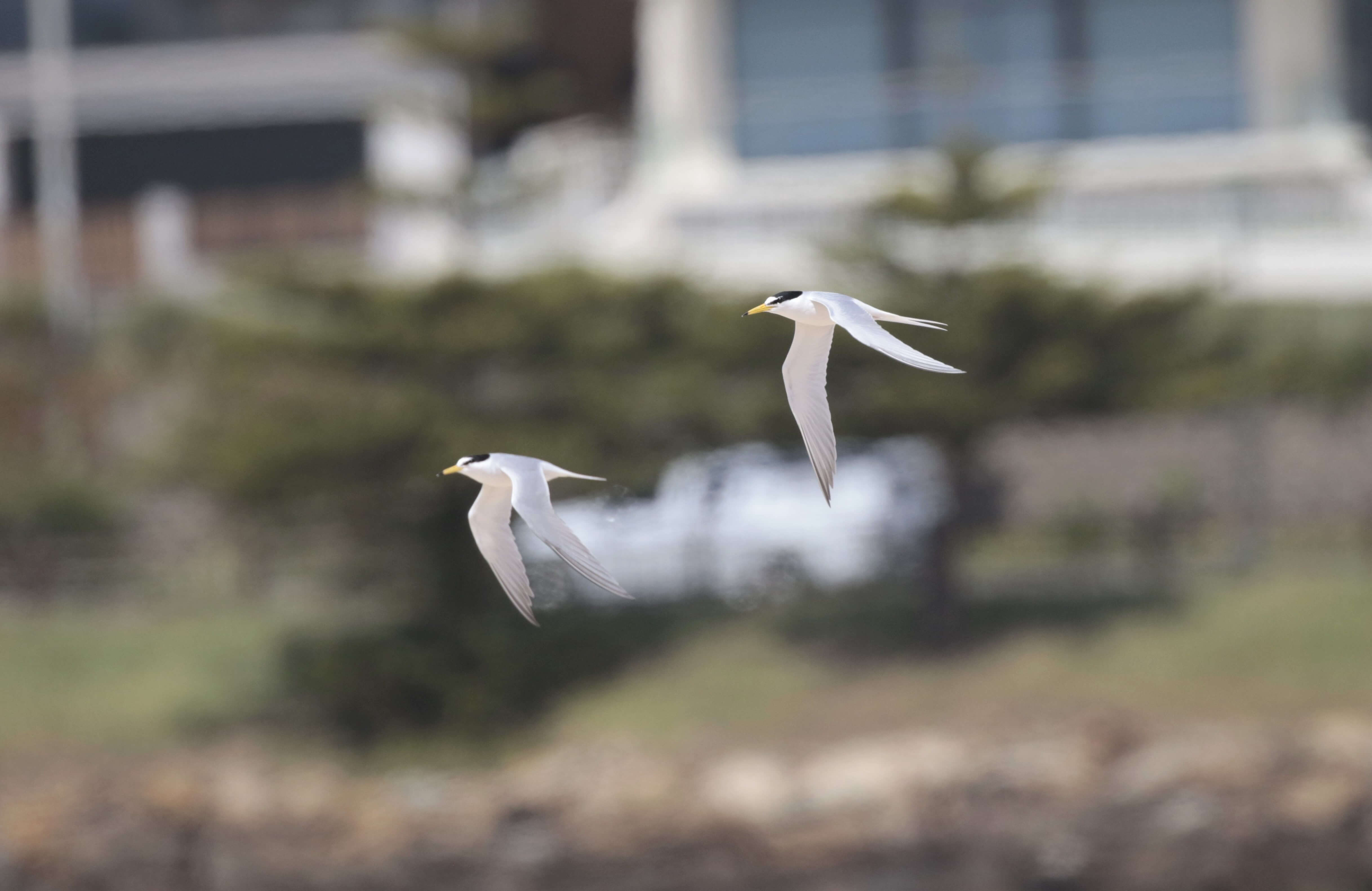
Image credit: Andrew Robinson
Your important role
#ShareTheShore
We're calling on beachgoers to #ShareTheShore this summer. Extremely sensitive to human disturbance, both locals and visitors must do all we can in summertime to ensure the beautiful Little Terns feel welcome and remain comfortable at their chosen breeding location in The Entrance North.
Previous disruptions have caused a rapid decline in their overall numbers and unfortunately Little Terns are now considered an Endangered species, protected under both State and Federal threatened species legislation.
These little birds suffer quite a lot of torment... habitat loss, human disturbance at nesting sites, and egg loss by foxes, dogs, cats and larger predatory birds. But in recent years, Central Coast Council has carried out best practice management at Karagi Point, supported by the community, resulting in record-breaking breeding success!
With a seven-fold increase in fledgling success over the last four years, Karagi Point is now considered one of the most important breeding colonies in NSW. This significantly contributes to the long-term survival of the species.
As a certified ECO Destination since 2022, the NSW Central Coast community and its visitors can continue to do all that's possible to protect not only the natural landscapes of the region, but all the amazing creatures living among us. Simply check out the Central Coast Sustainability Pledge where "we encourage our community and our guests to tread lightly and go slow on the NSW Central Coast." You can live and breathe this during your summer on our shores, sharing it with these special little birds.
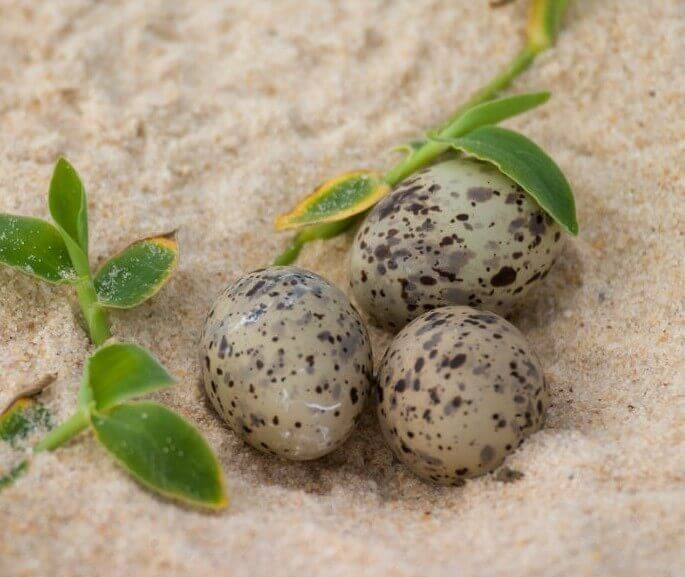
Precious seabird eggs. Credit: DPE
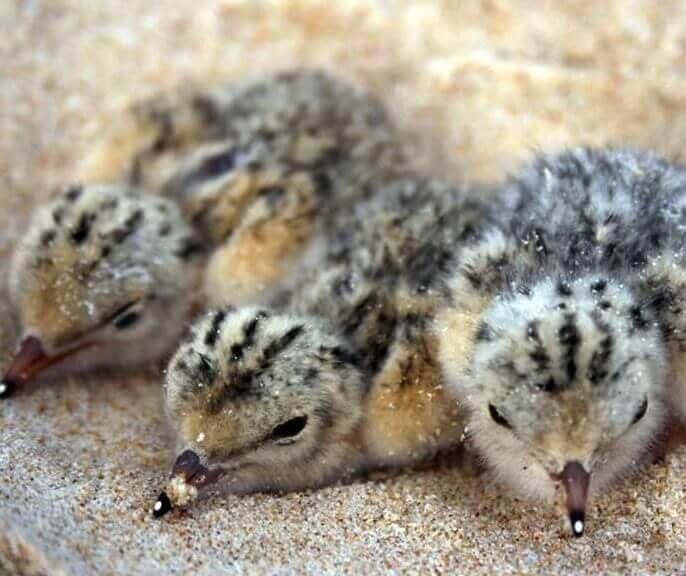
Little Tern chicks. Credit: Jodie Dunn / DPE
Protecting graceful Little Terns
Several ways you can help their survival this summer
Whether you're a resident or visitor, we would be so grateful if you and your family can please show general respect for our precious wildlife who call the Coast home.
In addition to your gentle commitment to tread lightly when exploring your own backyard or visiting the Central Coast as a guest, we've gathered some simple yet hugely impactful ways we can all protect the safety of our Little Terns during their vital visit each summer...
- Respectfully stay back from the fenced area at Karagi Point.
Central Coast Council have worked tirelessly alongside NSW National Parks and Wildlife Service and also NSW Biodiversity and Conservation Division, to construct purpose-built fencing and signage around the Little Terns' breeding area to protect the eggs and chicks. As highly sensitive birds they may abandon their nest if feeling threatened.
- Admire from The Entrance (south)
You can spot our beautiful native birdlife from the Boardwalk above the water located on The Entrance southern side, near the Central Coast Visitor Centre. Take in the stunning surroundings of The Entrance channel from Memorial Park, while the precious Little Terns and their fluffy chicks are not disrupted. Win, win!
- Ssshh! Lower your noise pollution
These birds have come a long way to chill with their chicks. Avoid playing loud music, large group gatherings, or using boats or jet skis with loud motors near Karagi Point. These disruptions can have a heartbreaking impact on Little Tern chicks.
- Don’t take your dog, even on a lead, to Karagi Point
We welcome your furry friends with open arms at many other dog-friendly parks and beaches on the Central Coast. This list of dog friendly locations makes it easy to know where you can enjoy walkies with the peace of mind our wildlife won’t be disturbed.
- Don't feed the birds or free your cat!
Generally it's never good to feed wild animals, but do not feed Sea (Silver) Gulls and other scavenger birds in The Entrance North area, as this may lead them to predate on (and fatally harm) Little Terns. And if you live locally and own a cat please keep it indoors at night - if caught harming the nests severe financial penalties from Roaming Rangers will come your way ($330,000 and/or 2 years imprisonment!).
- Avoid airtime
Drones and kites flown within the fenced area can lead to colony abandonment! Take your pick from alternative drone locations to take your epic drone shots instead, without the risk of harming wildlife.
- Report any sightings
Your valuable on-the-ground information on sightings of chicks, eggs or foxes outside the fenced area, or any unauthorised activities nearby, should be shared directly to Central Coast Council on 02 4306 7900 to take action.
- Leave only footprints and #Take3fortheSea
Take your rubbish, food waste, fishing tackle, line and bait home with you, or to the nearest bin. This rubbish can easily entice predators and have a fatal impact on the already declining numbers of Little Terns at Karagi Point! We can all agree this is the last thing we want for wildlife on the Central Coast. Please note: bins are located in The Entrance North car park.
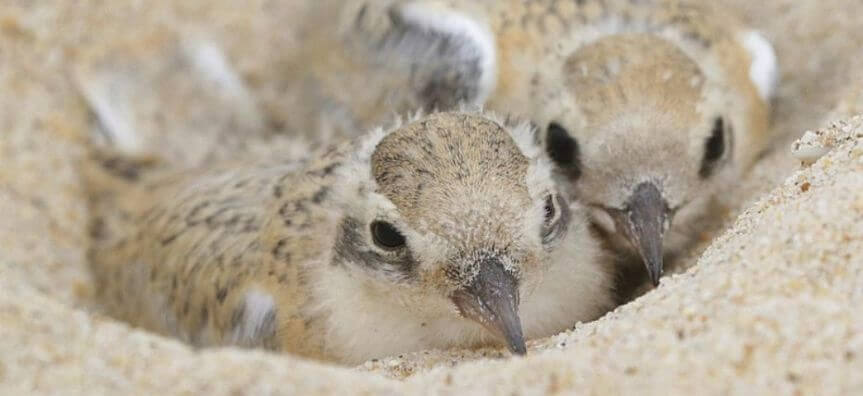
Image credit: Andrew Robinson
Photographers and birdwatchers
Twitching like a pro
Twitchers are passionate bird watchers, and we understand it may help to feed your curiosity to see the Little Terns live and up close by taking some memorable photos. Here's some tips from the professionals on how to observe and photograph shorebirds.
A responsible birder always:
- Keeps their distance
- Doesn’t outstay their welcome
- Respects beach closure signs, fences and beach driving rules.
Click here to learn techniques from professional bird photographers and researchers.
Learn a little more
Free bird displays and educational events
You can learn more about the Central Coast's annual Little Tern visitors by attending an upcoming educational talk, picking up a brochure, or seeing a free conservation science display at the Central Coast Visitor Centre, located at The Entrance.
The refreshed Visitor Centre in the heart of The Entrance by the water provides more immersive insight into the Little Tern bird. Ask friendly staff to see the new educational display featuring two breeding adults and three chicks (at various developmental stages), which have been taxidermed, along with an unviable egg, and positioned over a sandy substrate to replicate beach nesting. These collected science specimens have already contributed to conservation science, having undergone genetic testing at The Australian Museum.
Find out more in person from National Parks Discovery Rangers and Central Coast Council's dedicated Environmental Education team at one of these free talks available over the summer nesting season:
- Meet Discovery Rangers roaming Karagi Point during peak holiday periods coinciding with the Little Tern breeding season
- Visit the Central Coast Visitor Centre at The Entrance to pick up an educational brochure, chat to staff and see the Little Terns display
- Catch an educational stall during upcoming events at The Entrance, where Rangers will be at Karagi Point or nearby locations (Memorial Park - 2024 dates to be confirmed
- Attend a Council-run educational Kayak Tour at The Entrance (see Council's What's On page) - Saturday 9 November
- Shorebird education workshops will be held for children in local caravan parks - January 2024
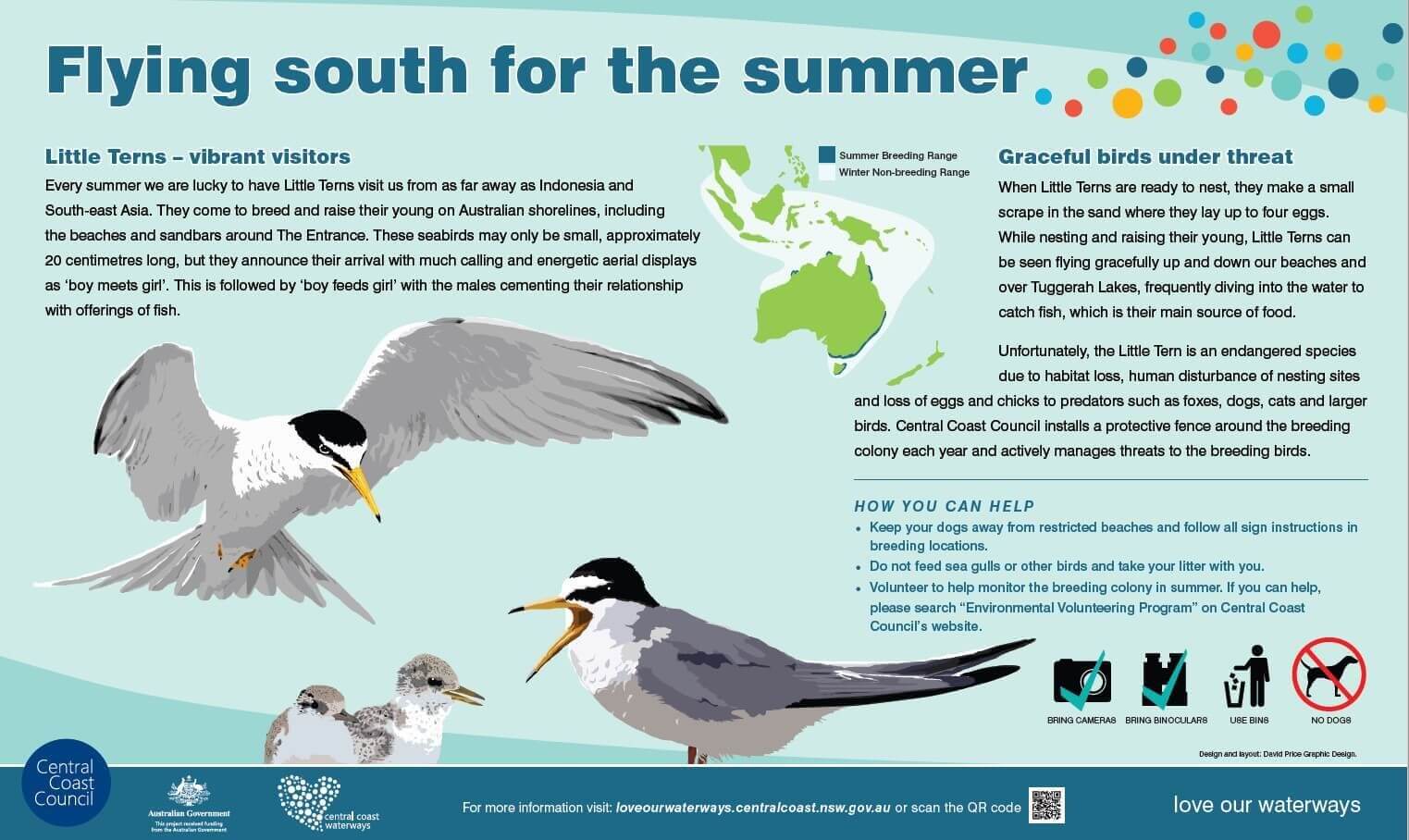
Credit: Love Our Waterways, CCC
Local eco-friendly experiences
If you’d like to learn more about the variety of wildlife we have here on the Central Coast generally, start with planning some local eco-friendly experiences with:
- Pelican Time at The Entrance every weekend, to meet these iconic coastal birds with expert wildlife rescuers
- Terrigal Ocean Tours to see whales, seals and dolphins with a qualified marine biologist
- Central Coast Marine Discovery Centre at Terrigal to learn about the world under the waves and hundreds of marine artefacts
- Iris Lodge Alpacas at Jilliby to have breakfast with friendly farmlife surrounded by native birds on a sustainable regenerated farm.
This article was originally authored by Whitney Edwards of the Destination Central Coast team in collaboration with A World Unfiltered, as part of Love Central Coast's support for growing the region's Eco Advocate community and ECO Destination status. To maintain accuracy, some editorial changes may have been made since publication.


